Ah, yes. Those rather innocuous-looking tools used throughout every discipline be it hunters, jumpers, western and even (shocking!) Dressage. The simplest directions for use are as follows : fold them in half length wise and throw in the nearest trash can. Seriously.
If you are reading this article because you wish to know how to use draw reins, the best advice you ought to follow is not to continue pursuing the implementation of these elements in your riding and training. Why? Better to take the wise words of one of the masters :
In training one always wants to go too fast. To arrive quickly, do not hurry, but be firmly assured of each step. The lesson should be for the horse, as for the horseman, a rewarding exercise, an instructive game which never brings fatigue. When sweat begins to show, it is because the man has gone too far.Faverot de Kerbrech (1891)
Why I bring this quote up, rather than one that directly villianizes the use of draw reins is several-fold. To begin with the use of draw reins is generally complex, and the reasons why riders turn to draw reins is similarly complex – there is no singular reason that draw reins are used by riders. Some hope to achieve the following :
- To create a specific head-set.
- To create the impression of collection through neck shape and position.
- To bring in the horse's nose and keep it from “poking out” in an unattractive manner.
- To lighten the horse's mouth and stop him from pulling on the reins.
- To create greater neck “flexibility” and “suppleness”.
- To speed along the progression of any of the above.
The quote above addresses one of the core reasons why people turn to draw reins – they are in a hurry to achieve something. They do not wish to wait and develop the horse correctly, or simply do not have the education to understand how to develop the horse in this way and so they slap on a piece of equipment which promises to train the horse for them.
Many times riders begin using draw reins because their trainer recommends them or “everyone else is doing it” around them. Lacking education to know better, they too begin using draw reins – this is a natural manner of learning in the horse world. But I believe it is important to point out specifically why you shouldn't use draw reins.
Rushed training always has faults
There;s no such thing as perfection when it comes at the cost of speed. Any horse trained with draw reins in order to speed up the training process will inevitably be flawed, often to a great degree.
“Lightness” gained through draw reins is misleading
Lightness in the horse's mouth comes through the relaxation of his lower jaw. The type of “lightness” that rider's experience from the use of draw reins is actually an evasion on the part of the horse. He will position his neck in such a manner as to avoid pressure on the bit while maintaining tension in the lower jaw.
True collection isn't possible
True collection comes by way of a combination between the elevation of the base of the horse's neck and the progressive flexion of the hind legs. Draw reins merely flex the horse's neck but do not allow the elevation of the base of the neck, preventing the flexion of the hind limbs. Any resemblance to collection is merely in the neck appearance. This stresses the horse's legs and often creates joint maladies.
Neck “suppleness” is an evasion
The horse does not gain suppleness through the neck by great degrees of flexion and instead the muscles of the neck can become greatly fatigued.
So what then is a rider to do who wishes to gain control, collection and lightness from their horse? Firstly, it cannot be done if you are counting the seconds to achievement. All of these things are ever-evolving and there is no such thing as a finished horse in this regard, merely those who are well-trained and physically capable.
Barring the time issue, the next step is really to become educated in the three basic elements necessary to all of these :
- Impulsion
- Straightness
- Elevation of the Base of the Neck
As a rider it is necessary to develop a balanced, dynamic seat which allows for independent use of the aids (hands without legs, legs without hands), to utilize the three basic rein aids (direct rein, indirect rein, half halt) and the two basic leg aids (impulsive and positional).
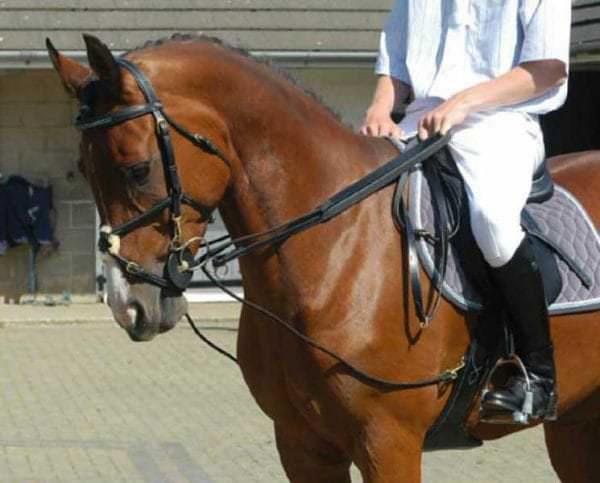

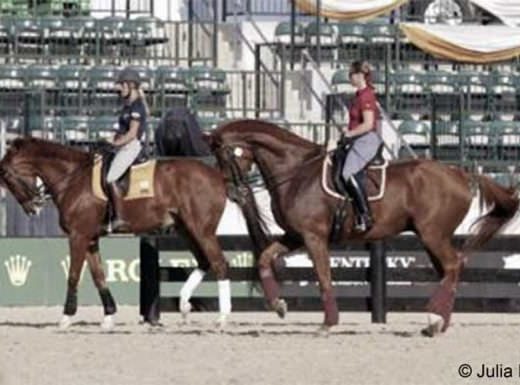
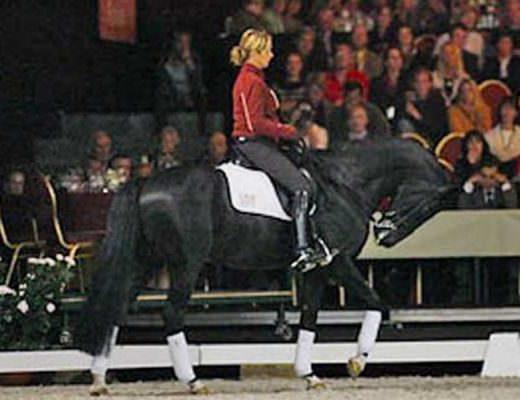


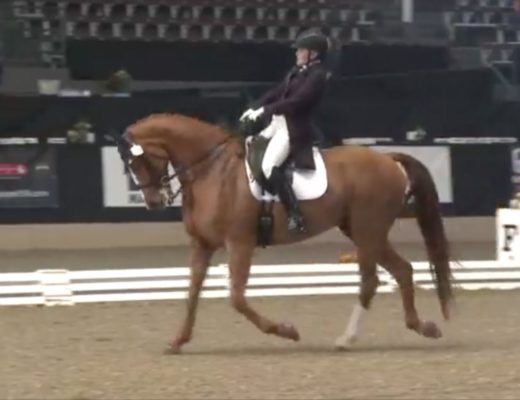
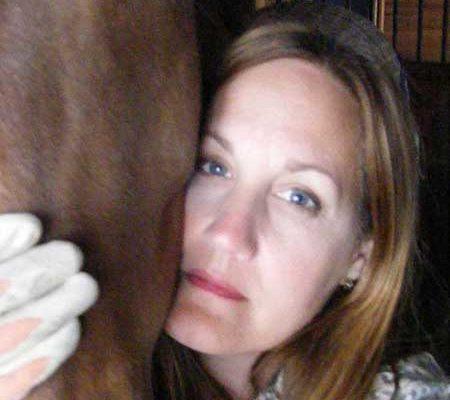
love this – can I re-post and link back?
Absolutely! Will you email me a link when you post it? 🙂
Cheers!
Thank you, thank you thank you! I recently went on a horse “safari” to find a new horse, and all of the “show” Arabs I tried had been draw reined to death and ruined for contact. (I do dressage and mountain riding.) I need the contact not only for dressage, but for the mountains so I can communicate when the bears come up the trail!
I interviewed a great reining trainer once decades ago, and he said, “I have every training gimmick you can think of hanging in my tack room — gathering dust. The horse figures them out with the first use, so it’s back to the foundation of a snaffle.” He was amazing because he both experimented and also knew what really worked: slow, correct training from the git-go. And his horses were amazing as well!
Sure thing! 🙂
I’m currently training a horse. I’m 16 and I’m learning with him. I’ve been using a German martingale because he uses the muscles on the underside of his neck to hold his head up due to a past teeth injury. I was wondering if this is similar to draw reins and what would you recommend to get him to use the top muscles. I’m sorry if this sounds like I’m ignorant about riding horses.
Hi Hanna,
Martingales, tie downs and draw reins are all *similar* though slightly different action. They are all mechanical devices meant to replace the lack of skill present in the rider. Please don’t take that as a criticism, as we all lack skill in some area and riding horses is truly a constant endeavor to improve our skills. So in your case the German Martingale is a device made and used to replace the lack of skill you currently face in getting your horse to move over the topline instead of inverted.
There are many things that can go into why a horse will work inverted (using the lower neck muscles, neck high, resisting the bit, not moving through from the hindquarters over the back, etc) but largely it will be a resistance to the bit/rein/hand combined with the rider’s seat either blocking or hindering the horse’s movement.
I’ve recently switched my horses over to being ridden bitless exclusively, which if your horse has had a teeth injury might be a viable option for you to look into if not for the long-term at least for the short term while his mouth is healing and he’s learning to trust pressure in the face.
The way the horse moves is always a reflection of two things. His physical well being combined with the physical and emotional well-being of the rider. If the horse is in any pain, whether it’s the fit of the saddle, whether he tolerates the pressure of a bit in the mouth well, his hooves, muscles, etc that will be reflected in his way of moving. Horses that move inverted (using the lower neck muscles, etc) are showing tension in their body. As a rider we can contribute to the problem if we lack a trained seat which follows the horse’s movement rather than inhibiting/blocking it, if our hands are not soft, if we have any fears or tension while in the saddle, etc. So, if you look at the way your horse is moving as a barometer of the health of the two of you combined.
Now, how to sort it all out and find the solution? First, I would suggest a search in your local area for anyone who gives seat training lessons to help with balance and security in the saddle, and also someone who can help you learn a soft hand with the reins. Those two things are of such immense value that they will help you in your riding for the rest of your life no matter the horse you are riding. And to offset the cost of lessons inquire if they might need some help mucking stalls, exercising horses, etc in trade for lessons. Many instructors are open to this.
Following that working with your horse to move forward and track up (there should be a post or two on here if you do a search for “tracking up”). This is where working him with soft hands and switching to a bitless bridle for a short bit can be really helpful too. If he has any reservations about stretching down into the bridle you’ll have a harder time teaching him to track up and move forward freely. You can practice this while leading, lunging and under saddle. The easiest to learn with is on the lunge because you can see how his hooves land and make adjustments from there. Also practice at a stand still asking him to raise his head and lower it down to the ground to encourage him to stretch his neck muscles out of the inverted carriage. Do this just by standing in front of him and holding onto each side of his halter with your hands, lifting his head straight up encouraging him to lift his own head (reward him with praise when he does raise it himself), and then apply pressure downwards asking him to drop his head to the ground (again, rewarding with praise when he does so).
This might seem like a lot of work for a basic problem you’re facing, however… keep in mind that once you get your horse moving forward properly and carrying his neck properly without hang-ups that everything else you ask from him will come 100% easier than when he is resisting and moving inverted. 🙂 So, working on this step is actually like working on every step in the future you face as well. 🙂
Cheers!
Draw reins have one use only and that is filling a dustbin.
Hi, I have been recently been working with a horse that use to be ridden in draw reigns, she has a lovely forward going walk and moves her head with your hands well, but as soon as i ask her to trot and even if we are out on a trail and she trots on her own accord she puts her head high and holds it completely still and rigid and hollows her back. she is ridden without a bit and i am currently riding her without a saddle because she does not have one that fits her correctly. i can’t find any info about retraining a horse after draw reigns on the internet, so any advice or links would be great.